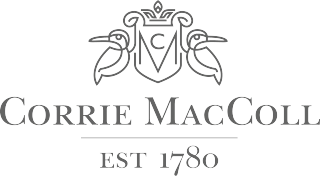Exploring Innovative Alternatives to Laser Cutting Rubber for Global Suppliers
In the realm of manufacturing and material processing, "Laser Cutting Rubber" has long been a go-to method for precision and efficiency. However, as industries evolve and the demand for sustainable practices intensifies, exploring innovative alternatives becomes paramount for global suppliers. This blog delves into various cutting-edge techniques that not only match the accuracy and versatility of laser cutting but also align with eco-friendly initiatives. From water jet cutting to die cutting and digital cutting technologies, we will examine how these alternatives can enhance production processes, reduce environmental impacts, and potentially lower costs. Join us as we uncover the potential of these innovative approaches and their implications for the future of rubber manufacturing.

Innovative Technologies Transforming Rubber Cutting in Global Supply Chains
As the global market for protective gloves is projected to grow from $26.26 billion in 2024 to $38.22 billion by 2032, innovative technologies are transforming the way rubber cutting is approached in supply chains. Traditional laser cutting methods are quickly being re-evaluated, with alternative techniques gaining traction. Solutions such as waterjet cutting, die cutting, and advanced mechanical cutting provide manufacturers with the precision and efficiency needed to meet the escalating demands of the market.
When considering alternatives to laser cutting, it's essential to evaluate the specific requirements of rubber products. For instance, waterjet cutting offers a non-thermal cutting solution that preserves the integrity of materials, making it ideal for intricate designs. Additionally, die cutting can significantly reduce waste and optimize production time, contributing to sustainability in manufacturing processes.
Tips for suppliers looking to adopt these innovative technologies include conducting a thorough cost-benefit analysis to understand which method best suits their product line. Collaborating with technology providers for pilot testing can also ensure that the chosen cutting method aligns with production capabilities and quality standards. By embracing these advancements, suppliers can enhance their operational efficiency and adapt to the growing needs of the global protective glove market.
Innovative Technologies Transforming Rubber Cutting in Global Supply Chains
This chart illustrates the percentage adoption of various innovative alternatives to laser cutting rubber among global suppliers in 2023.
Comparative Analysis: Laser Cutting vs. Waterjet Cutting for Rubber Materials
In the realm of precision cutting for rubber materials, a comparative analysis between laser cutting and waterjet cutting highlights significant advantages and evolving technologies. Recent advancements in waterjet technology have shown its versatility as a cutting tool, capable of achieving intricate designs with superior edge quality. For instance, studies indicate that abrasive waterjet cutting demonstrates lower heat-affected zones, which is crucial for materials like rubber that can deform under high temperatures typical of laser processing.
A novel direct diode laser (DDL) has emerged as a contender in the cutting landscape, presenting improved beam quality for fusion and flame cutting applications. However, the integration of such laser technologies necessitates careful evaluation against waterjet methods, particularly in scenarios where material integrity is paramount. In terms of performance metrics, the roughness values measured on cut surfaces highlight that waterjet cutting often delivers smoother finishes compared to laser cutting, especially when processing challenging materials with natural reinforcements, such as wood-filled composites.
The necessity for surgical-like precision in small-scale cutting further emphasizes the need for adaptable technologies. With applications extending to fiber-reinforced thermoplastic polymers, both cutting methods are under continuous scrutiny for their efficiency and effectiveness in delivering high-quality end products. As the industry moves towards more innovative approaches, understanding the comparative performance of laser versus waterjet cutting remains vital for global suppliers looking to optimize their manufacturing processes.
Exploring Innovative Alternatives to Laser Cutting Rubber for Global Suppliers - Comparative Analysis: Laser Cutting vs. Waterjet Cutting for Rubber Materials
| Criteria | Laser Cutting | Waterjet Cutting |
|---|---|---|
| Material Thickness Range | Up to 10 mm | Up to 200 mm |
| Cutting Speed | High (Speed varies with material) | Moderate |
| Edge Quality | Smooth | Rough |
| Heat Affected Zone | Yes | No |
| Waste Material | Moderate | Low |
| Initial Equipment Cost | High | Moderate |
| Operational Costs | High | Moderate |
| Maintenance Requirements | High | Low |
Exploring CNC Machining: Precision Alternatives for Rubber Fabrication
CNC machining has emerged as a precision alternative for rubber fabrication, providing global suppliers with innovative solutions beyond traditional laser cutting methods. This technique leverages computer-controlled tools to achieve highly accurate cuts and shapes, ensuring that the final product meets meticulous specifications. One of the key advantages of CNC machining is its versatility; it can accommodate a wide variety of rubber types and thicknesses, enabling manufacturers to create customized components for diverse applications.
When considering CNC machining for rubber fabrication, it’s essential to remember a few tips. First, always choose the right type of cutting tool to minimize wear on the rubber material and to achieve a clean edge. Additionally, proper machine calibration is crucial for maintaining dimensional accuracy throughout the process. Lastly, be mindful of the cooling systems in place to prevent overheating, which can alter the material properties and affect the quality of the finished product.
By exploring CNC machining, suppliers can achieve greater precision and efficiency in rubber fabrication while reducing waste and material costs. This innovative approach not only meets the high demands of modern manufacturing but also positions businesses to respond swiftly to fluctuating market needs.
3D Printing: A Game Changer for Custom Rubber Components and Prototyping
In recent years, 3D printing has emerged as a revolutionary alternative to traditional techniques like laser cutting, particularly in the manufacturing of custom rubber components. This innovative technology allows suppliers to create intricate designs and prototypes with remarkable precision. Unlike conventional methods, 3D printing enables the use of flexible materials that can be easily tailored to specific applications, making it an ideal choice for bespoke rubber products. This shift not only enhances design freedom but also reduces the time and costs associated with prototyping, allowing businesses to respond more quickly to market demands.

Moreover, 3D printing significantly minimizes waste compared to traditional cutting methods. By using additive manufacturing processes, manufacturers can create rubber components layer by layer, optimizing material usage and lowering production costs. This eco-friendly approach aligns with the growing emphasis on sustainability in the manufacturing sector. As global suppliers increasingly adopt 3D printing for their rubber component needs, they are not only improving operational efficiency but also embracing innovative practices that position them at the forefront of industry advancements. The future of rubber manufacturing is undoubtedly being reshaped by these technological innovations.
Sustainability in Rubber Cutting: Eco-friendly Alternatives for Modern Suppliers
The rubber processing industry faces mounting pressure to adopt sustainable practices, particularly in cutting technologies. Traditional laser cutting methods, while efficient, often produce significant waste and emissions. According to a recent report by the International Rubber Study Group, the production of rubber generates approximately 3.5 kg of CO2 emissions for every kilogram processed. This presents a compelling case for exploring innovative, eco-friendly alternatives that not only reduce environmental impact but also enhance precision in cutting operations.
One promising alternative is waterjet cutting, which employs high-pressure water to slice through rubber materials. This method produces less waste and minimizes the risk of burning, making it an attractive option for suppliers committed to sustainability. Research indicates that waterjet cutting can reduce material waste by up to 50% compared to traditional laser cutting techniques. Furthermore, technologies such as die cutting and ultrasonic cutting are gaining traction, offering similar sustainability benefits while improving the quality and durability of the end products. These alternatives align with the growing demand for greener practices in the supply chain and can help global suppliers meet their sustainability targets effectively.

Related Posts
-

Exploring the Impact of Laser Cutting Rubber Technology at the 137th Canton Fair in Guangzhou
-

Unlocking the Potential of Butyl Rubber for Global Suppliers
-

Mastering Ultrasonic Welding Rubber: A Step-by-Step Guide for Beginners
-

How to Optimize the Use of Normal Butyl Rubber for Enhanced Industrial Performance
-

China's Resilience in Manufacturing Best Ultrasonic Welding Rubber Amidst US China Tariff Challenges
-

Finding the Right Manufacturer for Best Styrene Butadiene Rubber Products

